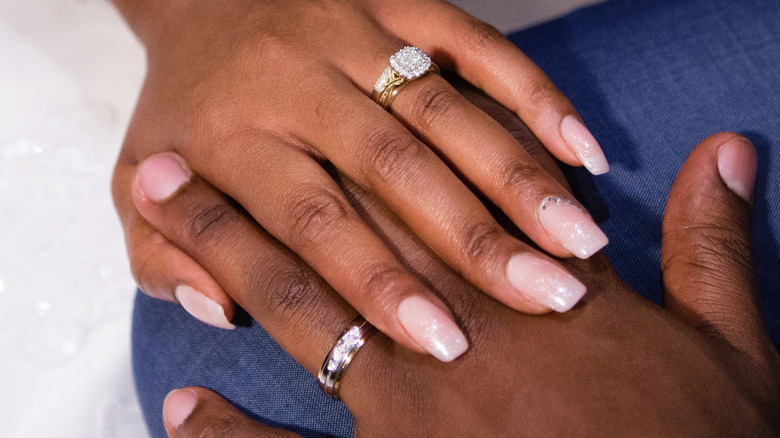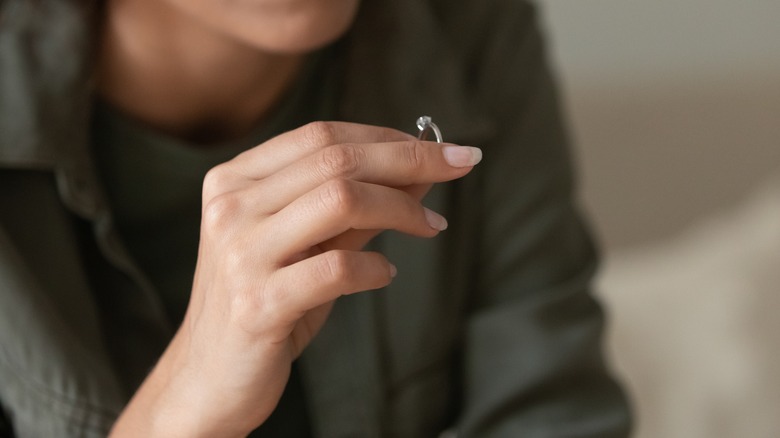The Myth About Wedding Rings You Can Stop Believing
Do you ever sit and fantasize about that fateful day when you peer down at your left hand and spot a radiant golden wedding band hugging your third finger? Maybe you're more the type who cherishes not having a ring on that finger and fully intend to keep it that way. In any case, we all know that a big ol' hunk of precious metal on the left ring finger means that somebody is off the market. It's just one of the many little ceremonial peculiarities that we incorporate into the timeless ritual of weddings. While traditions may vary throughout the world (according to The New York Times, a hopeful bachelor in Fiji often presents his prospective bride's father with a sperm whale tooth by means of asking for her hand), this one remains pretty constant throughout western culture.
Naturally, there's a reason the ring finger is called "the ring finger." We single it out as the motif of romance and devotion, but why that finger in particular? Why wear a ring in the first place? For a long time, people have been led to believe something about the ring finger's history that "explains" why lovers choose to slip a band onto it instead of any one of the other nine digits. As it turns out, this so-called explanation is little more than a matrimonial myth.
The heart of the myth
According to Est. 1897, ancient Egyptians asserted that there was a blood vessel that ran from the third finger on one's left hand all the way to the heart. However, this is anatomically false, in the sense that every finger contains vessels that stream blood to the heart, not just the ring finger (via Africa Check). While the sentiment is well-intentioned, you could theoretically get away with placing your spouse's ring on any one of their fingers and still establish the same symbolic medium between the pretty little jewel and their beating heart.
The Roman philosopher Ambrosius Theodosius Macrobius reaffirmed the finger-heart misconception when he said, "Because of this nerve [vein], the newly betrothed places the ring on this finger of his spouse, as though it were a representation of the heart" (per The Ring of Truth: And Other Myths of Sex and Jewelry). Unfortunately, despite all his merits and acclaim (per Britannica), Macrobius was wrong about this. Even the ancient Greeks bought into this fallacy, as Diamond Heaven reports. The plain (and utterly unromantic) fact of the matter is, there's nothing distinctly special about any one of our fingers as far as the heart is concerned.
Other theories
According to British physician Charles Thompson, placing a ring on the bride's left hand was a gesture of submission. "The left hand was chosen for the wedding ring on account of the inferiority of that hand to the right and so obedience was typified," he wrote in his 1932 book "The Hand of Destiny: The Folk-lore and Superstitions of Everyday Life." That's a far less affectionate gesture, but it might explain the truth about wedding rings.
Another prevailing theory claims that, during a Christian marriage ceremony, either the officiant at the wedding or the groom himself would tap the first three fingers of the bride's left hand (starting with the thumb) and say, "In the name of The Father, The Son, and The Holy Ghost," touching each finger successively as he named each member of the Trinity. He'd then place the ring on the fourth finger before declaring the woman his wife, as Africa Check reports.


